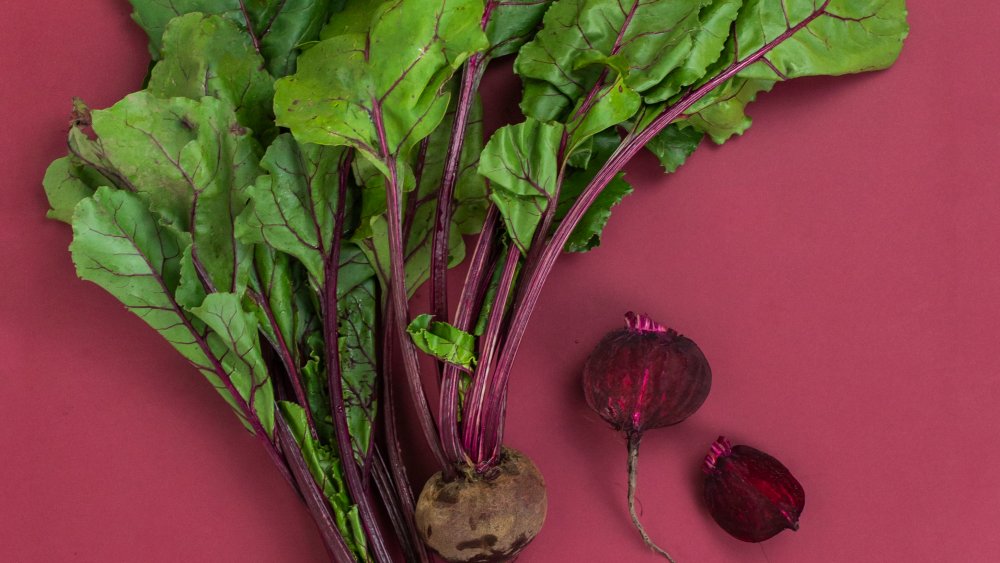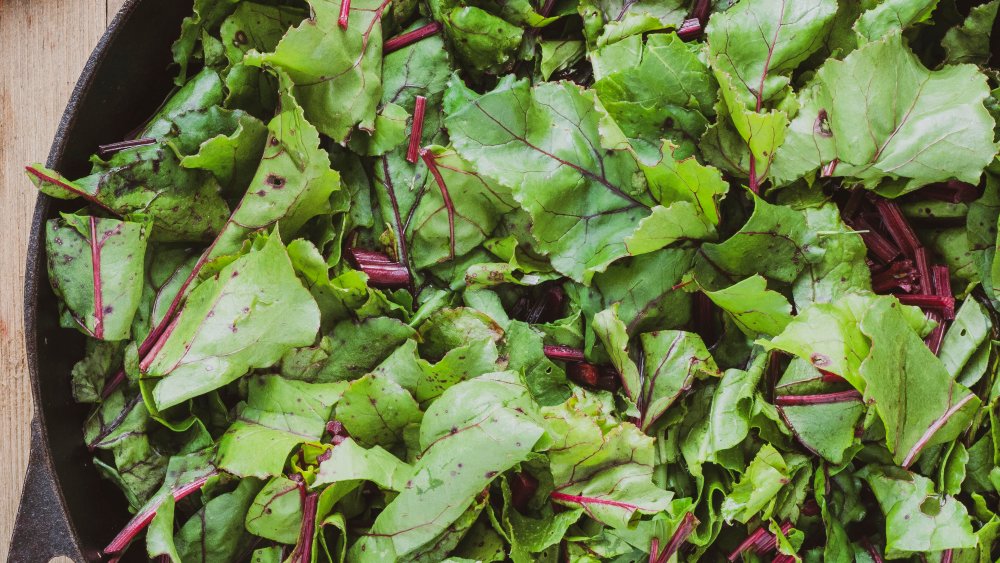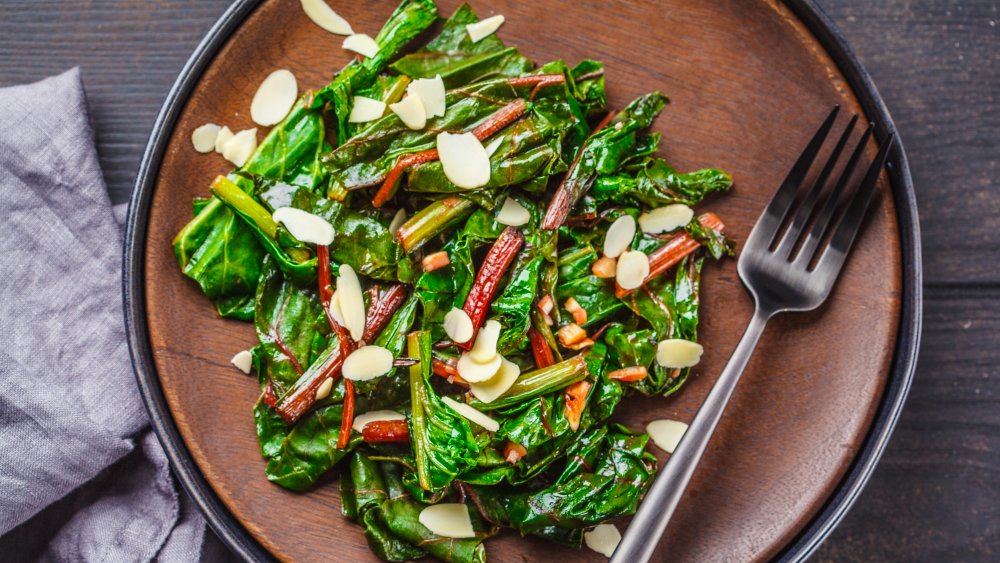Are Beet Greens Edible?
In the 2010s, beets — which have long horrified picky kids and stain-averse adults alike — made a surprising comeback, suddenly cropping up on menus nationwide, from fine-dining establishments to national chains like California Pizza Kitchen (via NPR). Whether this movement was spurred by, as NPR suggests, an effort by chefs to drive down food costs (beets tend to be, fittingly, dirt-cheap) or an overall uptick in consumers' healthy-eating habits, beets have made their way from hiding below the surface to enjoying a moment in the sun. In fact, the National Garden Bureau dubbed 2018 "Year of the Beet," tracing its popularity from medicinal use in ancient Rome. But today's beet consumers often make a common mistake: tossing the greens attached to these humble root-vegetable gems.
Beet greens boast nutritional benefits galore
According to Healthline, beet greens offer up a treasure trove of nutrition; they're chock-full of potassium, fiber, calcium, riboflavin, and vitamins A and K. The organization notes that a single cup of these cooked greens provides 220 percent of recommended daily vitamin A intake, plus 37 percent of potassium and 17 percent of fiber — not to mention antioxidants like lutein and beta-carotene. As for taste? Fans call them "earthy," while detractors claim they taste like dirt, with a bitter edge. However, some savvy preparation tips can help coax the optimal flavor out of leafy greens like those found on beets.
How to prepare, cook, and utilize beet greens
Though beet greens can be used raw in salads and wraps, when cooking, One Green Planet recommends a multistep process to score the best taste: Wash thoroughly to remove dirt particles, then dry; blanch to remove any bitterness, followed by a soak in ice water; and add flavor via spices, sauces, and additions like onion and garlic for a simple sauté. But true beet-greens aficionados applaud their wider range of uses, too. They can be baked into chips (like kale), liquidized for smoothies or juices, stirred into soups, omelettes and stir fries, or pulverized for pesto (via Just Beet It). And, unlike when working with beets themselves, you won't have to paint the town (i.e., your kitchen) red in the process.


